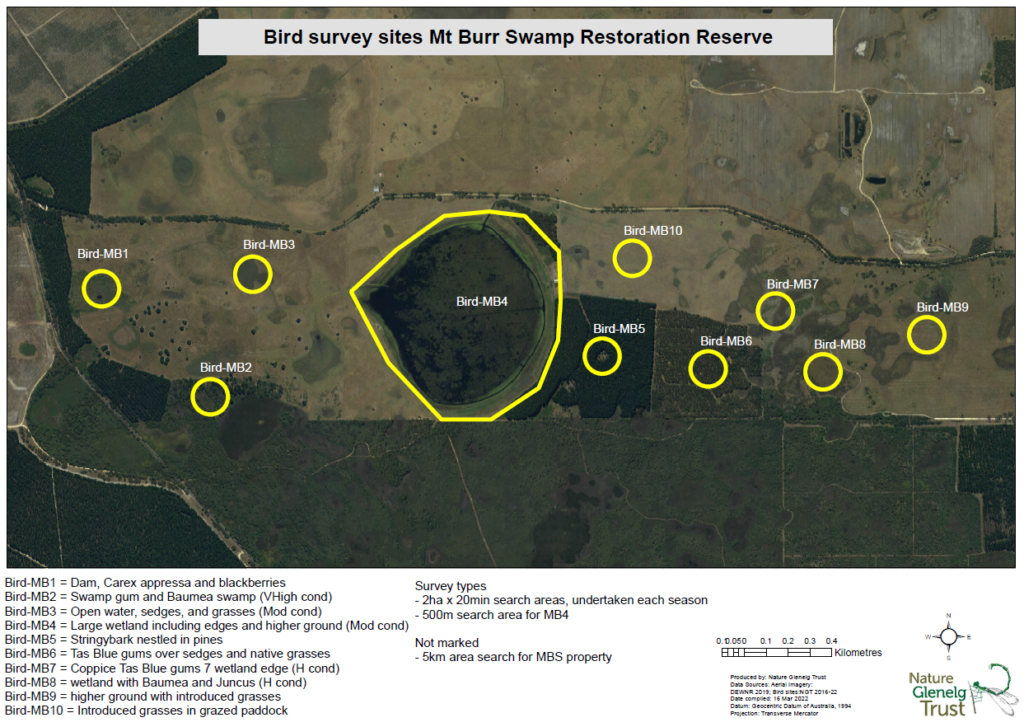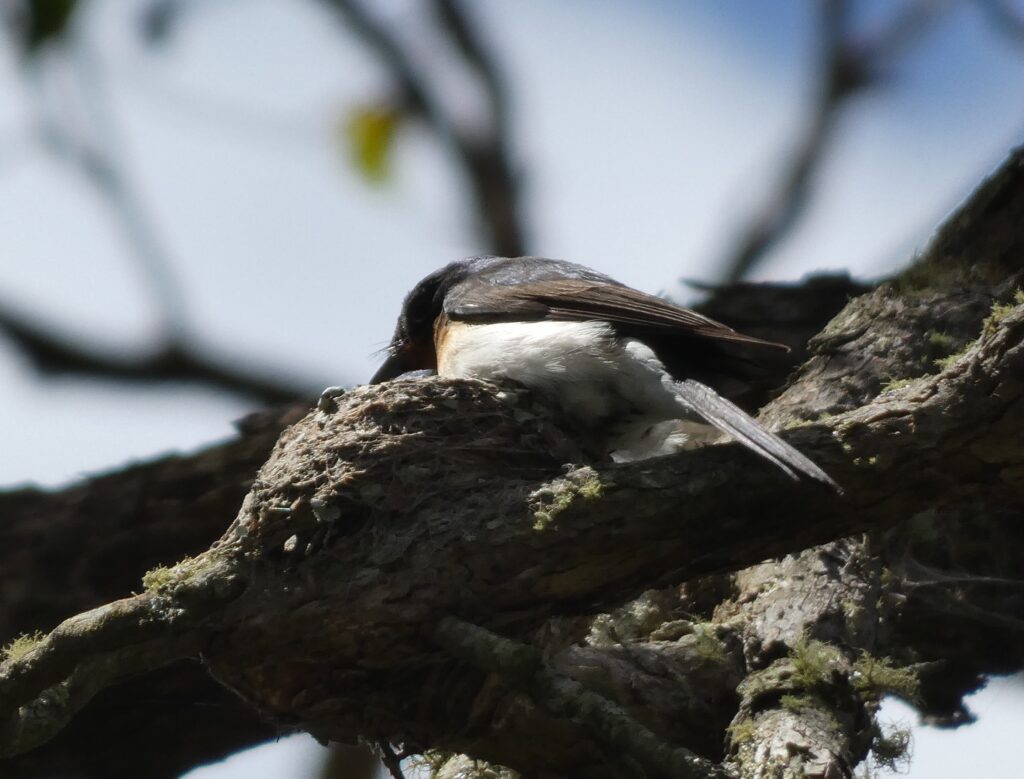Satin Flycatcher and more – an exciting bird list at Mt Burr Swamp
Monitoring of chosen groups of indicator wildlife that tell us about our restoration journey is a fascinating component to what we do here at NGT. Secretly, I think we’d all like to be out doing surveys of some sort!
This month I gave a talk to the Millicent Field Naturalist Society as part of their end of year break-up and December outing. The group recently celebrated their 60th birthday with an all-day event in Millicent in September. This great bunch active volunteers are a credit to themselves and the community in all the things they achieve, including being an important part of NGT’s volunteer community. I was invited to speak and provide an update on the restoration journey at Mt Burr Swamp recently and in particular the bird monitoring which began in early 2017 which they have generously assisted with.
Being private farmland before NGT purchased the site in 2016, the bird list at Mt Burr Swamp was very humble in the beginning with only a few waterfowl, some bush-birds and mostly open farmland birds like pipits, quail, ravens, magpies, etc. We set up six sites initially which increased to 10 by 2022. Gradually, once we held more water in the main swamp and fenced off the wetland and bushland area in the south-west corner, the monitoring sites have begun to contribute to an encouraging story about recovery of a more diverse bird community at Mt Burr Swamp.
The bird monitoring sites, shown below, have been surveyed by myself and volunteers like the Millicent Field Naturalist Society since 2017.
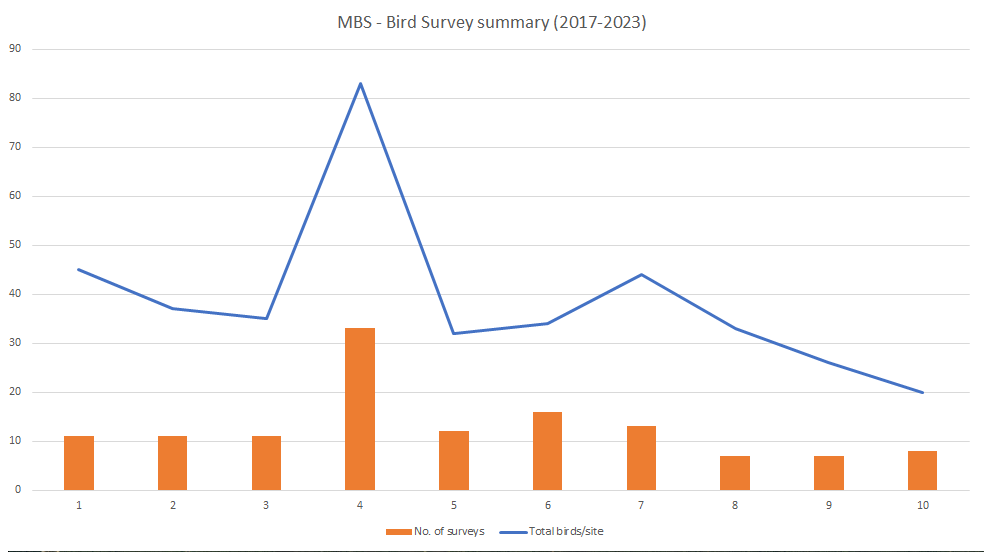
These are all shared sites through BirdLife Australia’s Birdata program, so anyone visiting the property, and interested in birds can add to our data set. Nine of the 10 sites are 2-hectare x 20-minute search areas, and the large 50-hectare wetland can be counted using the 500-metre survey method. Over 135 surveys have been undertaken amounting to a bird list of 115 species for the property, which is a pretty handsome list after only 6 years of surveys, and considering that the restoration process is still ongoing. As expected, the large 50-hectare wetland boasts the greatest number of bird species compared to the smaller (2-hectare) sites – which range from open paddock, to moderate condition wetlands, to high value remnant bushland.
Some interesting bird observations over the 6+ years of monitoring include: Glossy Ibis, Magpie Geese, White-bellied Sea-eagle, Flame Robin, White-bellied Cuckoo-shrike, Red-tailed Black Cockatoo, and Grey Goshawk – all of which have been observed once or maybe twice on the reserve. Brolga are observed almost daily with flocks of 5-10 and up to 30 birds at different times of the year. In the last few years (since 2020), we have even observed or heard Australasian Bittern, Latham’s Snipe and Lewin’s Rail!
Even more exciting news is that recently Satin Flycatcher and Australasian Darter have made Mt Burr Swamp their temporary home. In-fact, the Satin Flycatcher has gone one better and decided to pair-up and breed here this season! A nest was found only earlier this week (refer to photos below). Along with the crowd of on-lookers (Millicent Field Naturalist Society) we stumbled across this nest about 8 metres up in a stringybark tree in site 2. It was initially occupied by the male Satin Flycatcher, before the female swapped places with him a few minutes later. What a find!
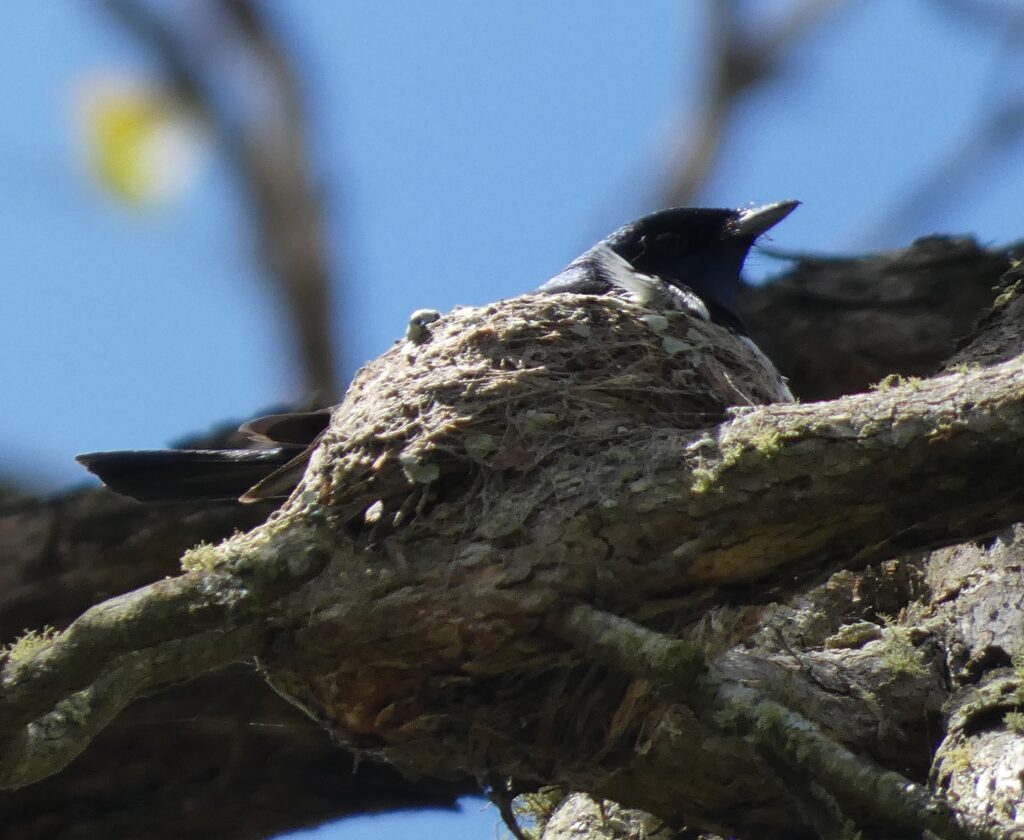
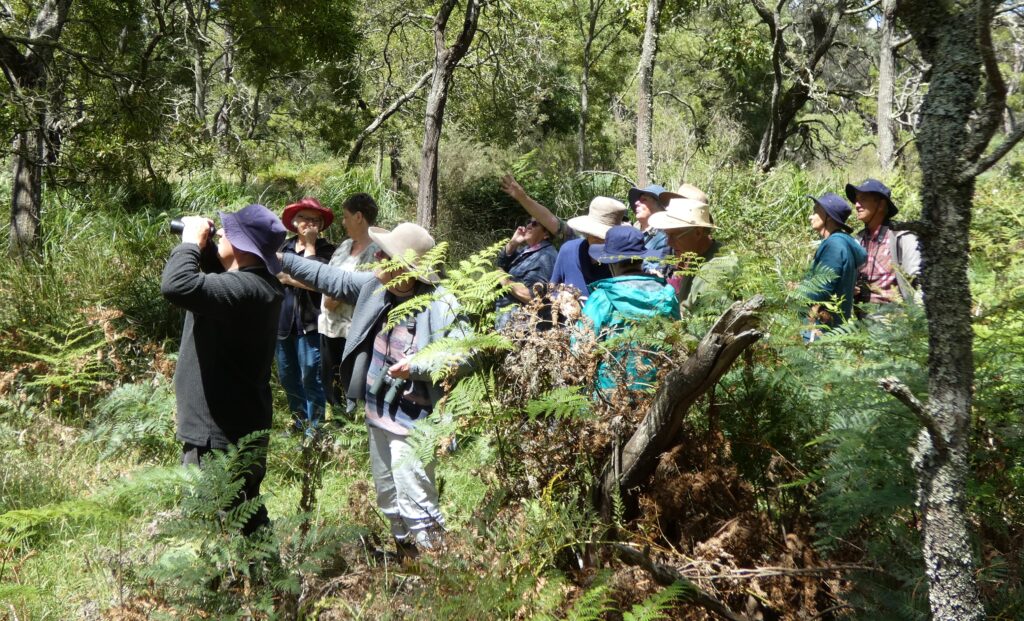
We look forward to continuing bird monitoring to help us tell the story of ecological recovery, and will keep you updated with new and interesting species or restoration trends in the future.

